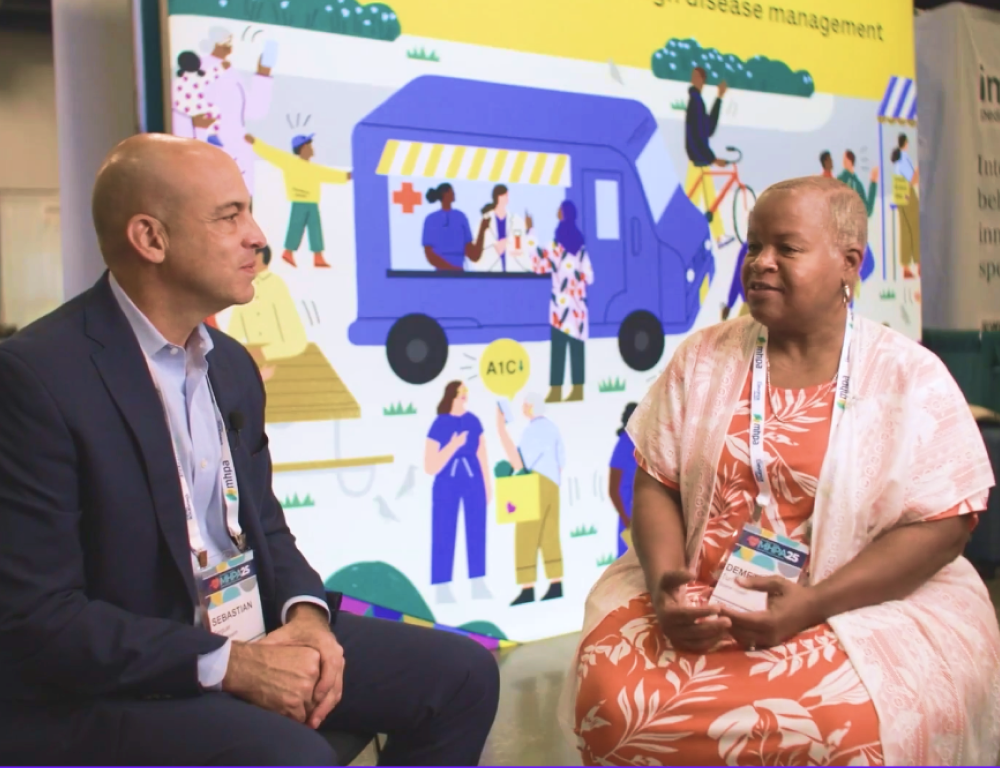Uniting for Impact: Public Health Approaches to Drive Medicaid Innovation: Insights From Our HealthTech 4 Medicaid Webinar

In Medicaid, the ability to connect patients with the vital resources they need is a linchpin for creating a truly equitable and accessible system. This idea was the cornerstone of our HealthTech 4 Medicaid (HT4M) webinar, a dynamic gathering of thought leaders from diverse corners of the healthcare spectrum.
During the webinar, “Uniting for Impact: Public Health Approaches to Drive Medicaid Innovation,” our CEO and Co-Founder, Sebastian Seiguer was joined by moderator Adimika Arthur, the Executive Director of HT4M and panelists: Crispin Delgado, the Executive Director of Insure the Uninsured Project (ITUP) and Dr. Jeffrey Alan Tornheim, an Assistant Professor of Medicine at the Johns Hopkins Medicine and an infectious disease specialist with Baltimore Public Health.
Inspired by a need to unite diverse expertise, experiences, and visions, to shape a compassionate and accessible healthcare system, the conversation was framed by an emphasis on how collaborative partnerships could bridge gaps in healthcare access for Medicaid enrollees who often face disproportionate challenges to accessing equitable care.
Here are the top three ideas from their insightful conversation:
Linkage to care efforts help the healthcare system meet patients where they are to improve health outcomes and reduce healthcare disparities.
When treating patients, most of the time, we have no idea what their work/home/lives look like, but people’s behaviors matter. We on the healthcare side make assumptions that are built in, but there’s so much work we can do. How do we break down walls and barriers? How can we not have a lot of judgment about how people live and meet them exactly in the moment? — Adimika Arthur, Executive Director of Health Tech 4 Medicaid
We’re only as strong as our weakest link and we’re only as healthy as the sickest person in our community. So the question is, how do we link people to meaningful care so they can live their longest, healthiest lives? — Crispin Delgado, Executive Director of Insure the Uninsured Project (ITUP)
Linkage to care becomes so important for all communities but particularly for those that have trouble accessing a care framework. We should do whatever we can do to prevent having that conversation in clinical settings. How do we get people plugged in so they can be out living their lives? — Dr. Jeffrey Alan Tornheim, an Assistant Professor of Medicine at Johns Hopkins Medicine
Technology is pivotal to effectively amplifying care and optimizing healthcare delivery.
Many of our systems are changing and it’s hard for folks to stay on top of them. That’s a great space for tech to help translate and update. It’s hard for people to stay on top of the content, process, and communication all at the same time. — Dr. Jeffrey Alan Tornheim, an Assistant Professor of Medicine at Johns Hopkins Medicine
When thinking about innovation, technology is definitely a part. [Implementing ] different care models and improving how we deliver the care is important so that doctors are able to focus on what they’re specifically scoped to do and everyone else wraps their roles around that. — Crispin Delgado, Executive Director of Insure the Uninsured Project (ITUP)
Video Directly Observed Therapy (video DOT) is a public health innovation and practice that’s become a lever for change in the larger healthcare ecosystem.
In all effective models of care, people are what make the difference. The role of technology is to amplify that. What we did at Scene was to scale the Directly Observed Therapy process that helps people with infectious disease take their medications. We started helping with observation but scaled to address other issues. But our approach [video DOT] remained a person to person interaction. Eventually, it was recognized by the CDC as the standard of care. — Sebastian Seiguer, CEO and Co-Founder of Scene Health
Applying the tech that Sebastian was throwing out as a workforce amplifier has been huge. If you have to take TB treatment for 6-9 months but you feel better after 2 months, then the role of [video] DOT is to make sure you don’t fall off the treatment. And the number of encounters that can be performed by the same number of people in that time explodes. It allows holiday visits and allows it to be generalizable. — Dr. Jeffrey Alan Tornheim, an Assistant Professor of Medicine at Johns Hopkins Medicine
Looking ahead
As we navigate and endeavor to improve the ever-evolving landscape of healthcare, it's imperative that we continue to break down silos and bring together stakeholders from various corners of the industry. Only through these collaborative endeavors can we innovate, bridge gaps, and ensure equitable access to quality care for all.
Watch the full webinar recording:




Download the Insights into Medication Challenges in Populations with Low Incomes: The Scene Medication Survey

Download the Insights into Medication Challenges in Populations with Low Incomes: The Scene Medication Survey





.png)

